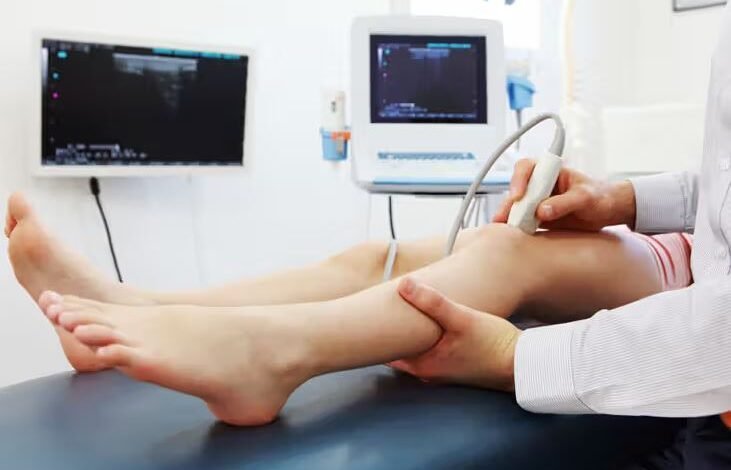Ultrasound Examination Review: Understanding and Overcoming Common Pitfalls

In the realm of medical diagnostics, ultrasound examinations play a pivotal role, offering invaluable insights into various health conditions with minimal invasion. However, like any diagnostic procedure, examination review for ultrasound are not without their challenges. Understanding and addressing common pitfalls in ultrasound examinations are crucial for accurate diagnosis and patient care. In this comprehensive review, we delve into the intricacies of ultrasound examinations, particularly focusing on pediatric ultrasound registry review, with insights from Ocean Ultrasound, a renowned leader in diagnostic imaging solutions.
Introduction to Ultrasound Examinations
Ultrasound examinations, also known as sonography, utilize high-frequency sound waves to create images of internal body structures. This non-invasive imaging modality has become indispensable in various medical specialties, including obstetrics, cardiology, and oncology. With its real-time imaging capabilities and absence of ionizing radiation, ultrasound is widely preferred for diagnosing conditions in patients of all ages, including infants and children.
The Importance of Pediatric Ultrasound Registry Review
Pediatric ultrasound examinations present unique challenges due to the anatomical and physiological differences in pediatric patients. Accurate interpretation of pediatric ultrasound images requires specialized training and expertise. This is where pediatric ultrasound registry review becomes invaluable. Ocean Ultrasound offers comprehensive registry review courses tailored to pediatric imaging, equipping sonographers and healthcare professionals with the skills and knowledge needed to overcome challenges specific to pediatric ultrasound.
Common Pitfalls in Ultrasound Examinations
- Suboptimal Image Quality: Poor image quality can hinder accurate diagnosis. Factors such as improper transducer positioning, inadequate acoustic coupling, and patient-related factors like obesity or excessive movement can contribute to suboptimal images. Through proper training and technique refinement, sonographers can mitigate these challenges and improve image quality.
- Artifacts: Artifacts are anomalies in ultrasound images that do not represent actual anatomical structures. Common artifacts include acoustic shadowing, reverberation, and acoustic enhancement. Recognizing and distinguishing artifacts from true pathology is essential to avoid misinterpretation and ensure accurate diagnosis.
- Limited Field of View: In some cases, achieving a comprehensive view of the target area may be challenging due to anatomical constraints or patient positioning. This limited field of view can result in incomplete assessment or missed abnormalities. Utilizing alternative scanning techniques and optimizing patient positioning can help overcome this limitation.
- Inadequate Documentation: Accurate and thorough documentation of ultrasound findings is essential for effective communication with referring physicians and for medico-legal purposes. Incomplete or inconsistent documentation can lead to misunderstandings and compromise patient care. Establishing standardized reporting protocols and ensuring meticulous documentation practices are imperative.
Overcoming Common Pitfalls: Strategies and Best Practices
- Continuing Education and Training: Regular participation in continuing education courses and specialized training programs, such as those offered by Ocean Ultrasound, is essential for sonographers to stay updated on the latest techniques and advancements in ultrasound imaging. Continuous learning enhances proficiency and enables sonographers to overcome common pitfalls more effectively.
- Quality Assurance Measures: Implementing robust quality assurance measures, including regular equipment maintenance, image review sessions, and peer feedback, helps identify and address issues affecting image quality and interpretation. By maintaining high standards of quality assurance, healthcare facilities can minimize errors and enhance the reliability of ultrasound examinations.
- Collaborative Approach: Foster a collaborative approach among multidisciplinary healthcare teams, including sonographers, radiologists, and referring physicians. Effective communication and collaboration facilitate the exchange of information, interpretation of findings, and decision-making, ultimately improving patient outcomes.
- Patient-Centered Care: Prioritize patient comfort and cooperation during ultrasound examinations. Establishing rapport with pediatric patients and their caregivers, employing age-appropriate communication techniques, and minimizing procedural discomfort contribute to a positive patient experience and facilitate optimal imaging outcomes.
Ultrasound examinations are invaluable diagnostic tools in modern medicine, offering safe, non-invasive imaging solutions across various clinical settings. However, navigating through common pitfalls inherent in ultrasound imaging requires a combination of technical expertise, continuous training, and collaborative efforts. With a dedicated focus on pediatric ultrasound registry review and comprehensive educational initiatives, Ocean Ultrasound remains committed to empowering healthcare professionals with the knowledge and skills needed to overcome challenges and deliver high-quality ultrasound examinations, ensuring optimal patient care and outcomes.




